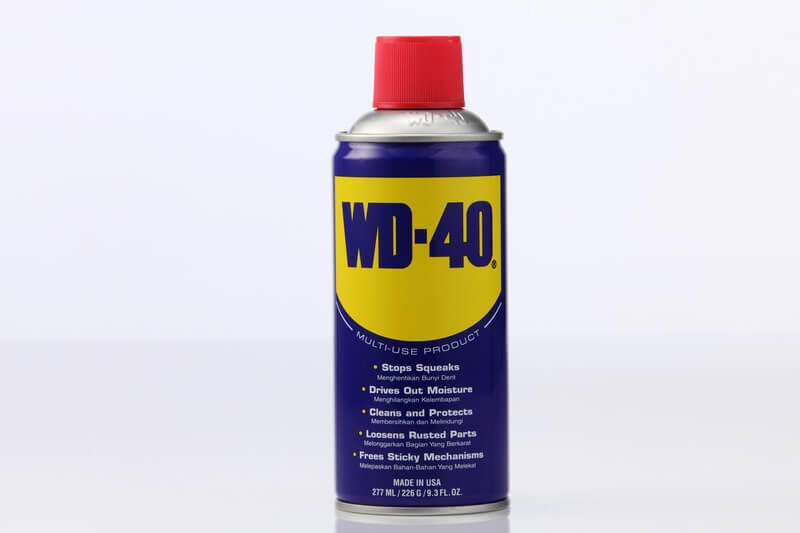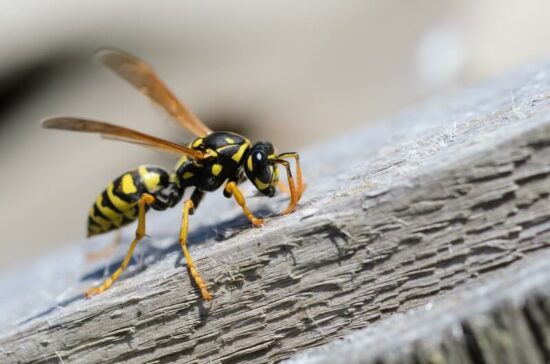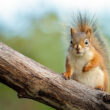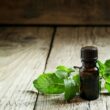Using WD-40 to kill wasps is a tactic that many homeowners don’t know much about. In fact, we’d guess that the majority of them don’t think it works at all!
This guide will teach you everything you need to know about using WD-40 to kill wasps, and how to do it as effectively as possible.
Table of Contents
Does WD-40 Kill Wasps?
Wasps are the bane of many homeowners’ existence! These insects can create nests in the most inopportune places, rendering your outdoor space inhabitable if you don’t want to risk a sting. They have a knack for setting up nests under eaves, on porches, and any other sheltered place.
Because they pose such a safety risk, many people try everything to get rid of wasps and keep them out. You’ve probably heard of many old wives’ tales and DIY solutions. Walk through a big-box home improvement store, and you’ll see many commercial chemicals, too.
But one method that’s talked about for killing wasps involves a home improvement staple you likely already have in your garage or shed. We’re talking about WD-40!
Expert Tip: WD-40 is technically a water displacement chemical, hence the “WD” in its name. Many people refer to it as a lubricant. While it does many of the same things as a lubricant, it’s technically more than a simple oil. It contains many chemicals that help prevent corrosion, dissolve rust, and more.
Every home needs that iconic red-capped can of blue and yellow WD-40. The product has so many purposes that it pays to have it on hand just in case.
But does WD-40 kill wasps?
Believe it or not, WD-40 is a fantastic wasp killer! There are a number of different reasons why it works so well.
The main reason is that it gets into the insect’s breathing holes. Wasps need to breathe just like any animal. It absorbs oxygen and releases CO2 just like you do. However, it achieves that feat a little differently.
Wasps have tiny holes throughout their body called spiracles. You can’t typically see them with the naked eye because they’re so small. But the holes are there, opening and closing to allow oxygen in as the bug breathes.
Here’s where the magic of WD-40 comes in. This versatile household solution is specifically formulated to get into small holes. That’s why it’s so effective at loosening tight screws and lubricating metal.
When the chemicals get into those spiracles, it prevents air from getting in. As a result, the wasp suffocated to death.

But that’s not all. The body temperature of the wasp usually causes the WD-40 to foam on contact. That helps get the solution in many spiracles, smothering the wasp and preventing it from getting any oxygen into its lungs. If a wasp does survive, it’s only a matter of time before the chemicals attack the central nervous system.
WD-40 doesn’t kill wasps instantly, but it works surprisingly fast. It doesn’t take too long to suffocate the insects. In many cases, the spray will also immobilize the bugs by coating the wings and making it impossible for them to get away.
How To Use It Effectively
Using WD-40 to kill wasps is straightforward. If you’ve ever used this product before, you know how easy it is to pop off the cap, insert the straw, and spray!
But when using it to kill a potentially aggressive bug, there are a few techniques to improve efficiency.
1. Gear Up
First and foremost, gear up to keep yourself safe. We’ll get into recommended safety precautions in a bit, but the most important thing to remember is that you’re dealing with an aggressive insect that wants nothing more than to protect the nest.
Wasps are no joke. They can swarm and sting you repeatedly. Some people are sensitive to bug stings, so there’s even a risk of anaphylaxis and potentially life-threatening complications.
Take steps to keep yourself safe when killing wasps with WD-40! That means standing back, wearing long sleeves, donning pants, and even wearing a face shield if you feel it’s necessary.
Expert Tip: Don’t be afraid to go over the top with protection. You never know how these bugs will react; you could agitate many of them if you’re dealing with a nest.
2. Spray Flying Wasps
When you see wasps flying around, spray them with the WD-40. Stray wasps could be on their way back to a nest. Or, they may be looking for a spot to establish a new nest.
Either way, killing them and preventing a larger problem later is best.
Expert Tip: Remove the straw when trying to kill flying wasps. The straw is great for more targeted applications, but spraying without it covers more area.
3. Saturate The Nest
If you spot an active nest, gather some courage and prepare to attack!
WD-40 is an excellent solution for getting rid of wasp nests. Saturating the nest prevents air from getting in and out. As a result, you can suffocate an entire small colony in one move.
The bugs that survive will ultimately get the chemicals in their system anyway. So, this product can take down nests and their occupants in many ways.
Once you’re close, pop off the straw for more extensive coverage. Then, saturate the nest as much as possible and from as many angles as you can.
There’s no such thing as applying “too much” in this situation. The more you spray, the better chance you have of killing them all!
4. Wait
Now is when it’s time to be patient. After saturating the nest with WD-40, wait about an hour.
Expert Tip: Many wasps will die within minutes, but others will cling to life for much longer. You want to give the chemicals as much time as possible to take these bugs down. An hour should do.
5. Discard The Nest
After you’re done waiting, observe the nest to make sure there are no signs of life. You can give it a good poke with a broom handle or long stick to make sure.
If all seems well, knock the nest down. Wasps can return to old nests if they’re still standing.
Place the nest in a plastic bag, tie it tight, and toss it in your dumpster.
Safety Precautions To Take
WD-40 is such a staple in homes that it’s easy to forget that it contains many potentially dangerous chemicals. Take a peek at the label, and you’ll see!
It’s not a liquid you want to breathe in or get onto your skin. Before you do anything, put on some protective gear. That includes the long-sleeve shirt and pants we covered earlier.
It’s a good idea to wear some gloves. Gloves will protect your hands from any back spray. Plus, it’s wise to have hand protection when dealing with the wasp nest. You never know when a straggler will try to take revenge on you for destroying the nest as you discard it!
In addition to the basics, consider wearing a face mask and eye protection. It might seem overkill with something as commonly used as WD-40. But remember: You’re spraying the chemical-laden solution into the air.
If it’s even remotely windy, that stuff can come right back at you. Wear protection to avoid issues and stay safe as you use this DIY solution to eliminate wasps and their nests.
When developing your plan of attack, you also want to consider the movements of the wasp. These insects are no joke, and agitating them too much could put you on the end of some nasty stings.
Killing an entire nest of wasps with WD-40 is daunting, but you can strategize to mitigate your risks.
For example, plan to spray the nest at night or late evening as the sun dips below the horizon. Wasps don’t necessarily sleep, but their metabolism slows down as the temperature drops. They become less active and focus more on housekeeping tasks around the nest.
At night, the wasps are less likely to go on a frenzied attack, so it’s the best time to get the job done.
Will WD-40 Keep Wasps Away?
WD-40 does more than kill active wasps in the short term. It can also keep them away in the future.
Wasps tend to return to the same spot season after season. It’s an entirely new generation of bugs, but they instinctively know that the previous season’s location was safe (which is quite fascinating). The bugs live life unbothered, so the queen will usually attempt to go back after coming out of hibernation.
If the old nest is still there, queens often move in to start the new colony. It’s a way to save energy and avoid unnecessary work.
The best way to prevent wasps from coming back after you’ve killed them with WD-40 is to get rid of that old nest. That will decrease the chances of a return.
But you can take things a step further by spraying the entire area with WD-40. Spray any area where wasps frequently roam. That includes roof eaves, gutters, shade covers, and any other place they try to establish nests. Apply the WD-40 liberally.
You’ll immediately notice that the WD-40 leaves a strong chemical smell behind. Fortunately, this is one of the scents they hate that will keep them away in the future.
Don’t worry, the smell will dissipate. However, it lingers just enough to signal to wasps that it’s not a safe place to live.
Conclusion
Now that you know WD-40 does kill wasps, feel free to use it whenever it’s all you have around! Since this is such a common solution to have in your home, knowing about this trick can come in handy.
Let us know if you have any questions about this method. We’re more than happy to help.


